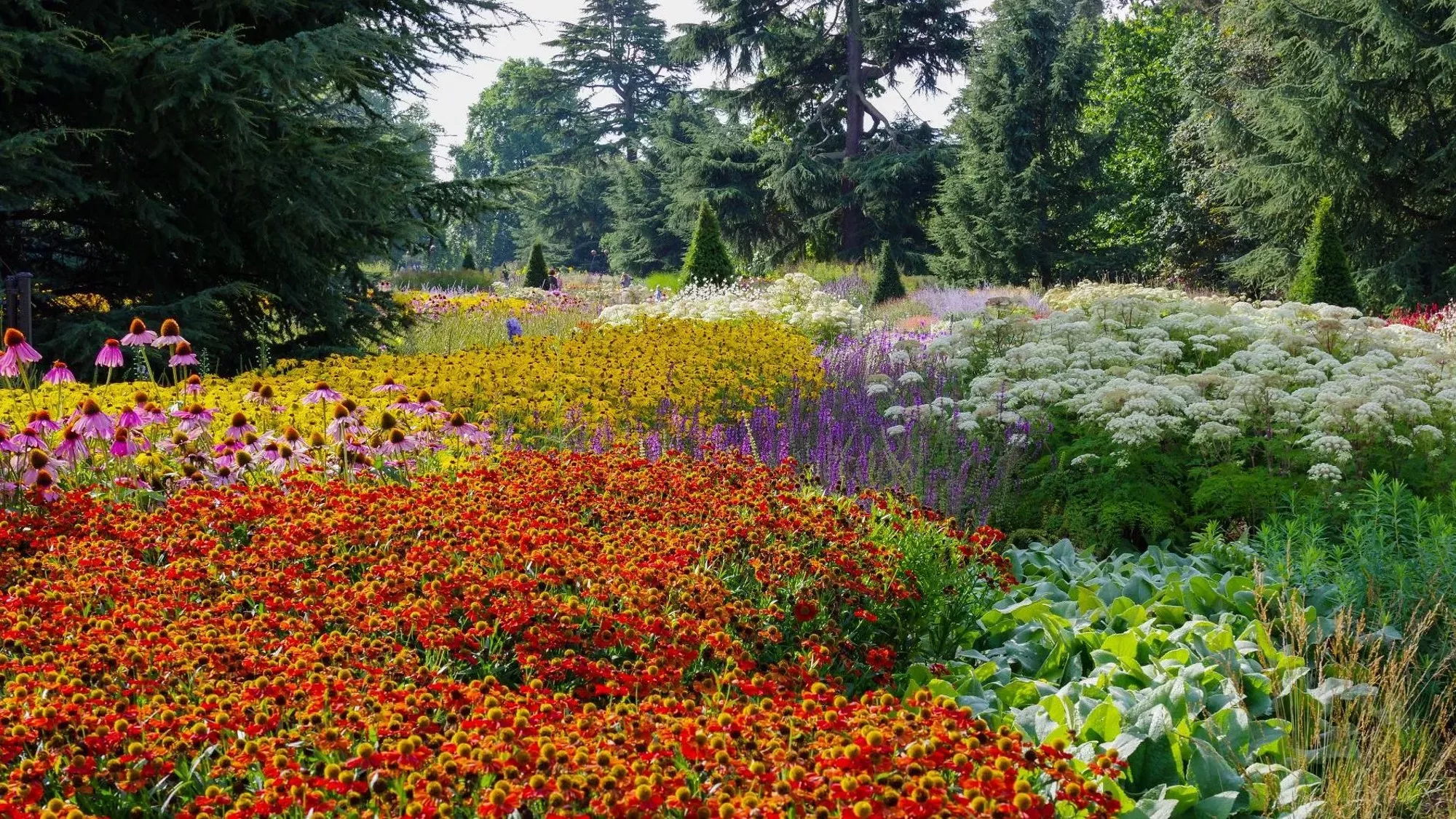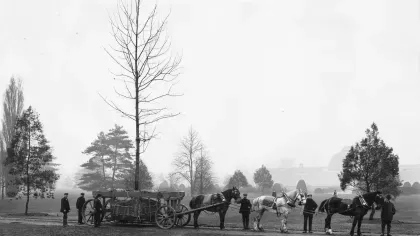30 June 2023
Pride and Kew
At the end of this year's Pride Month, we reflect on why it's still as important as ever, and what it means to our staff at Kew Gardens.

Across Kew, 12% of staff identify as LGBTQIA+*, which is above the estimated 4% in the wider population.
It’s a great sign, and indicative of an overall safe and supportive workplace we can all be proud of.
But there’s always work to be done, both for the LGBTQIA+ Kew community and in support of our other staff network members and minority groups.
You may have already seen the Pride flag flying at Kew Gardens, or one of our staff wearing a rainbow lanyard.
*Stats taken from Kew's 2022 demographic survey

Inside Kew, our staff network LGBTKew (previously Out at Kew), has met since 2015, bringing together LGBTQIA+ colleagues and allies from across both sites to share experiences and work towards collaborative, positive changes for everybody.
In the UK today, recent research shows a generally supportive public towards LGBTQIA+ neighbours, work colleagues, family and friends.
But non-inclusive policies and behaviours persist in the UK. The everyday lives of some members of the UK LGBTQIA+ community can remain very difficult and are sometimes unsafe, with those who are trans and non-binary under particular pressures at present.
Pride is just as important as it’s ever been. To mark the end of Pride month, we’re celebrating the Pride experiences of LGBTKew member Ellie Wilson and co-chair Marco Pellegrini.

Ellie’s Pride
Everyone in the queer community has a different relationship with Pride. Some of us ignore it, some are there for the party, and some prefer to focus on Pride’s origins as a protest. Personally, I love Pride, from the placards to the glitter. Here’s why.
In 2019 I was a 'baby bi', nervously queueing to march at Pride in London for the first time. It was loud and bright and crowded and overwhelming. I walked with my group through a rainbow balloon arch, and it hit me that hundreds of thousands of people were lining the streets to cheer for people like me.
It was a rush like nothing else: half exhilaration, half gratitude. I never forgot that queer people had to fight hard to make that possible, and we still have so much left to fight for.

If you’re not one for crowds, a smaller Pride might suit you better.
When I marched at Peterborough Pride with my girlfriend last year, the reactions from the Saturday high street shoppers ranged from pleasant surprise to mild confusion – but we felt the power of claiming those streets as our own. A reverend in his dog collar marched with us and took it on himself to deal with the one belligerent onlooker.
We ended up at a community garden with music, street food and local groups running stalls. There were families and teenagers and older people; it felt warm and neighbourly, like a street party where everyone knew each other.
Nothing is perfect, of course. Pride events can be inaccessible, commercialised or mired in controversy, and we all have to make our own calculations about safety. I support anyone who’d rather stay home and watch Pride (2014) instead.
With that said: if you’re queer and you’ve ever wanted to march at Pride, you should. Every one of us deserves to be celebrated.

Marco’s Pride
I came out as gay in 2009, during my second year at university.
For me, going to university meant I was able to have more freedom; not having my parents constantly watching over me. This allowed me to become more comfortable in my own skin and start my self-acceptance journey.
But it still took me a long time to learn to love myself, embrace who I am, and finally start to be proud of being me.
For that reason, I didn’t necessarily feel comfortable going to Pride – it wasn't until 2012 that I finally felt I belonged there. Instead of attending the main Rio Pride parade, I limited myself to a smaller satellite queer event happening that same week. At that point, there were still a lot of insecurities, and I didn't feel truly empowered to live my truth.
Funnily enough, despite being Brazilian, living in Rio for years, and having friends and family in São Paulo, I first attended Pride in Washington DC. The year was 2016, and I had come a long way from being the small-town naïve queer I had always been. I had just gotten engaged to my current husband and was living in another country with a completely different language and culture.

In a similar way that moving away from my parents and hometown gave me room to question and find myself, moving to the US also allowed me to let go of my preconceptions of who I was and who I was meant to be.
So, for me, Pride has the meaning of belonging, of finally feeling comfortable in my own skin, of celebrating who I am. The music, party, glitter and all the dressing up are a plus for me, but not everyone needs to like all that… and I say that being married to an introverted gay man.
This year, more than ever, I feel the need to celebrate. I’ll be celebrating another step on my personal journey, marked by my first Pride comfortable with identifying as non-binary.
In case you enjoy the parade and party, it’d be my pleasure to see any of you there; sit down for a chat, a snack and a drink.
Happy Pride!



